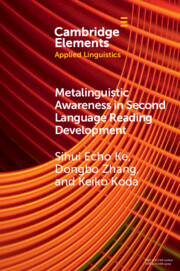108 results
Diagnosing the fast-heating process of the double-cone ignition scheme with x-ray spectroscopy
-
- Journal:
- High Power Laser Science and Engineering / Accepted manuscript
- Published online by Cambridge University Press:
- 03 June 2024, pp. 1-17
-
- Article
-
- You have access
- Open access
- Export citation
Effect of dietary selenium intake on CVD: a retrospective cohort study based on China Health and Nutrition Survey (CHNS) data
-
- Journal:
- Public Health Nutrition / Volume 27 / Issue 1 / 2024
- Published online by Cambridge University Press:
- 27 March 2024, e122
-
- Article
-
- You have access
- Open access
- HTML
- Export citation
Experimental measurement of spatio-temporally resolved energy dissipation rate in turbulent Rayleigh–Bénard convection
-
- Journal:
- Journal of Fluid Mechanics / Volume 984 / 10 April 2024
- Published online by Cambridge University Press:
- 27 March 2024, A8
-
- Article
- Export citation
Construction and Characterization of a Nanostructured Biocatalyst Consisting of Immobilized Lipase on Mg-Amino-Clay
-
- Journal:
- Clays and Clay Minerals / Volume 69 / Issue 4 / August 2021
- Published online by Cambridge University Press:
- 01 January 2024, pp. 434-442
-
- Article
- Export citation
Clay Mineralogy of the Zhada Sediments: Evidence for Climatic and Tectonic Evolution Since ~9 Ma in Zhada, Southwestern Tibet
-
- Journal:
- Clays and Clay Minerals / Volume 60 / Issue 3 / June 2012
- Published online by Cambridge University Press:
- 01 January 2024, pp. 240-253
-
- Article
- Export citation
Compact Thomson Scattering Source Based on a Mixed Injection Assisted Laser Wakefield Accelerator
-
- Journal:
- Laser and Particle Beams / Volume 2022 / 2022
- Published online by Cambridge University Press:
- 01 January 2024, e9
-
- Article
-
- You have access
- Open access
- HTML
- Export citation
Antibiotic treatment duration for culture-negative sepsis in the pediatric intensive care unit
-
- Journal:
- Antimicrobial Stewardship & Healthcare Epidemiology / Volume 3 / Issue 1 / 2023
- Published online by Cambridge University Press:
- 22 December 2023, e249
-
- Article
-
- You have access
- Open access
- HTML
- Export citation
Upregulation of miR-21-5p rescues the inhibition of cardiomyocyte proliferation induced by high glucose through negative regulation of Rhob
-
- Journal:
- Journal of Developmental Origins of Health and Disease / Volume 14 / Issue 5 / October 2023
- Published online by Cambridge University Press:
- 11 December 2023, pp. 670-677
-
- Article
- Export citation
Digital generation of super-Gaussian perfect vortex beams via wavefront shaping with globally adaptive feedback
-
- Journal:
- High Power Laser Science and Engineering / Volume 12 / 2024
- Published online by Cambridge University Press:
- 29 November 2023, e5
-
- Article
-
- You have access
- Open access
- HTML
- Export citation
Anatomical studies and early results on endoscopic transoral medial pterygomandibular fold approach to salvage retropharyngeal lymphadenectomy in nasopharyngeal carcinoma
-
- Journal:
- The Journal of Laryngology & Otology / Volume 138 / Issue 5 / May 2024
- Published online by Cambridge University Press:
- 17 November 2023, pp. 540-547
- Print publication:
- May 2024
-
- Article
- Export citation
Heat transfer in a quasi-one-dimensional Rayleigh–Bénard convection cell
-
- Journal:
- Journal of Fluid Mechanics / Volume 973 / 25 October 2023
- Published online by Cambridge University Press:
- 23 October 2023, R5
-
- Article
- Export citation
Association of Dietary Approaches to Stop Hypertension (DASH) diet with self-reported sleep-disordered breathing (SDB): a cross-sectional study from China
-
- Journal:
- British Journal of Nutrition / Volume 130 / Issue 10 / 28 November 2023
- Published online by Cambridge University Press:
- 31 March 2023, pp. 1806-1813
- Print publication:
- 28 November 2023
-
- Article
- Export citation
Habitat selection and population status of breeding Wood Snipe Gallinago nemoricola in an alpine meadow in Sichuan, China
-
- Journal:
- Bird Conservation International / Volume 33 / 2023
- Published online by Cambridge University Press:
- 27 March 2023, e54
-
- Article
- Export citation

Metalinguistic Awareness in Second Language Reading Development
-
- Published online:
- 02 February 2023
- Print publication:
- 23 February 2023
-
- Element
- Export citation
Flow states and heat transport in liquid metal convection
-
- Journal:
- Journal of Fluid Mechanics / Volume 951 / 25 November 2022
- Published online by Cambridge University Press:
- 28 October 2022, R1
-
- Article
-
- You have access
- HTML
- Export citation
Three-dimensional properties of the viscous boundary layer in turbulent Rayleigh–Bénard convection
-
- Journal:
- Journal of Fluid Mechanics / Volume 947 / 25 September 2022
- Published online by Cambridge University Press:
- 22 August 2022, A15
-
- Article
- Export citation
Fluid evolution and ore genesis of Cu–Pb–Zn veins in the Panjiaduan deposit, Great Xing’an Range, NE China: evidence from fluid inclusion and H–O–He–Ar isotopes
-
- Journal:
- Geological Magazine / Volume 159 / Issue 10 / October 2022
- Published online by Cambridge University Press:
- 09 August 2022, pp. 1663-1680
-
- Article
- Export citation
Characteristics and Trend of Drug-Resistant Tuberculosis at a Major Specialized Hospital in Chongqing, China: 2016 Versus 2019
-
- Journal:
- Disaster Medicine and Public Health Preparedness / Volume 17 / 2023
- Published online by Cambridge University Press:
- 16 May 2022, e169
-
- Article
- Export citation
Exploring the plume and shear effects in turbulent Rayleigh–Bénard convection with effective horizontal buoyancy under streamwise and spanwise geometrical confinements
-
- Journal:
- Journal of Fluid Mechanics / Volume 940 / 10 June 2022
- Published online by Cambridge University Press:
- 12 April 2022, A37
-
- Article
- Export citation






















































